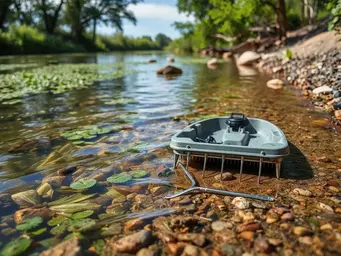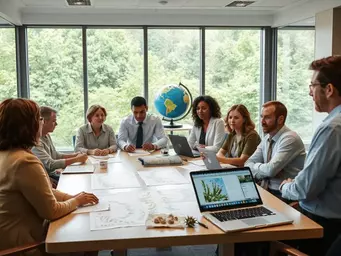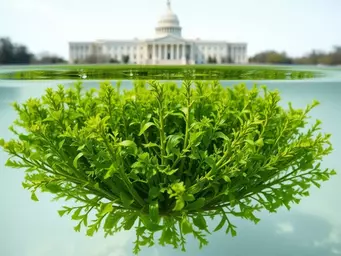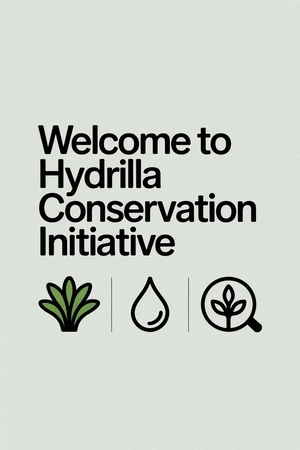Did you know that the proper identification of aquatic plants can significantly influence conservation efforts? Understanding the nuances between species like hydrilla, elodea, and egeria is essential for effective ecosystem management. Let's delve into the core insights you can gain from this article.
What You Will Learn
- Accurate identification of hydrilla, elodea, and egeria is crucial for effective resource allocation and management strategies.
- Recognizing the differences between invasive and native species helps preserve biodiversity and protect vulnerable ecosystems.
- Hydrilla's rapid growth can negatively impact native flora and fauna, making awareness of its traits essential for conservationists.
- Engaging the community through education and clean-up events fosters a collaborative approach to managing invasive species.
- Implementing integrated control methods—mechanical, chemical, and biological—enhances the effectiveness of invasive species management.
Key Characteristics for Identifying Aquatic Plants
Differentiating between Hydrilla, Elodea, and Egeria is crucial for effective ecosystem management. The visual below highlights their primary distinguishing features.
Hydrilla: The Aggressive Invader
- Leaves: Whorled, 5-7 per node, serrated edges.
- Growth: Forms dense mats, fast-growing.
- Ecological Role: Serious threat, displaces native flora.
Elodea: Beneficial Native
- Leaves: Softer, broader, rounded shape.
- Growth: Promotes biodiversity.
- Ecological Role: Provides habitat and food.
Egeria: Distinctive Aquatic Plant
- Leaves: Wider, less serrated than Hydrilla.
- Growth: More robust in flowing waters.
- Ecological Role: Similar to Elodea, distinct flowering.
Understanding Aquatic Plants: Hydrilla, Elodea, and Egeria Overview
As an aquatic biologist, I cannot stress enough the importance of accurate identification when it comes to managing invasive species like hydrilla, as well as understanding native plants like elodea and egeria. Each of these aquatic plants plays a unique role in our ecosystems, and recognizing their characteristics is essential in safeguarding our waterways. Whether you are a seasoned environmental professional or new to the field, honing your identification skills can lead to better management practices.
Have you ever found yourself confused between these species? Trust me; you’re not alone! As we dive deeper into the specifics, you’ll see how understanding the nuances of each plant can make a significant difference in your conservation efforts.
Recognizing the Importance of Accurate Identification
The challenge of identifying hydrilla, elodea, and egeria lies not just in their appearance but also in their ecological roles. Accurate identification helps us avoid mismanagement that can lead to further ecological imbalance. Here are some key reasons why it matters:
- Resource Allocation: Proper identification allows for targeted management strategies.
- Preservation of Native Species: By distinguishing between invasives and natives, we can protect vulnerable ecosystems.
- Community Engagement: Clear identification fosters effective communication with community members and stakeholders.
Remember, the first step in any effective management strategy begins with a solid understanding of the plants in question. I encourage you to share your identification experiences and challenges, as it can foster a collaborative learning environment!
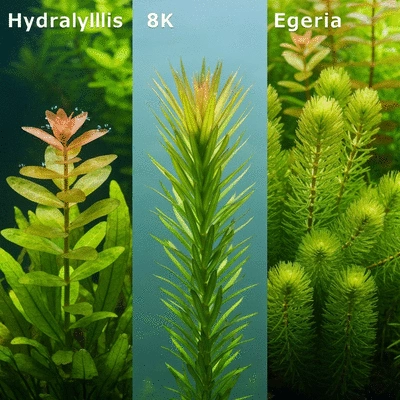
Introducing Hydrilla, Elodea, and Egeria
Let’s take a closer look at these three aquatic plants. Hydrilla is often regarded as one of the most troublesome invaders, with its fast-growing nature making it a serious threat to native flora and fauna. In contrast, elodea and egeria are generally considered beneficial to aquatic environments, providing habitat and food for various species.
- Hydrilla: Known for its aggressive growth and ability to form dense mats.
- Elodea: A native plant that promotes biodiversity in freshwater ecosystems.
- Egeria: Similar to elodea but with distinct flowering characteristics.
Understanding these differences is crucial for anyone involved in environmental conservation and management. Each plant affects its surroundings differently, which can influence your management strategies!
Exploring the Role of Aquatic Plants in Freshwater Ecosystems
Aquatic plants, including hydrilla, elodea, and egeria, serve vital ecological functions. They contribute to nutrient cycling, provide shelter for aquatic organisms, and stabilize sediments. In fact, healthy aquatic plants are a cornerstone of thriving freshwater ecosystems.
- Nutrient Cycling: Aquatic plants absorb nutrients, reducing eutrophication risks.
- Habitat for Wildlife: They offer breeding and feeding grounds for various aquatic species.
- Water Quality Improvement: By filtering pollutants, they enhance overall water quality.
Understanding these roles is essential as we aim to combat the spread of invasive plants like hydrilla while promoting the health of beneficial species. Together, we can work towards restoring our precious ecosystems!
Pro Tip
When trying to identify hydrilla, elodea, and egeria, consider using a plant identification app. Many such tools allow you to take a photo of the plant and receive instant feedback on its species. This can not only enhance your identification skills but also contribute valuable data to local conservation efforts!
Key Takeaways for Identifying Hydrilla, Elodea, and Egeria
As we navigate the waters filled with hydrilla, elodea, and Egeria, it’s crucial to keep in mind the distinctive characteristics that will aid in proper identification. Accurate recognition of these aquatic plants is not just an academic exercise; it serves as the first line of defense in managing their impact on local ecosystems.
So, what are the key features to remember? Here’s a summary:
- Hydrilla has whorled leaves in groups of five to seven, often with serrated edges.
- Elodea typically features softer, broader leaves with a more rounded shape.
- Egeria stands out with its wider, less serrated leaves and tends to grow more robustly in flowing waters.
Familiarizing yourself with these key traits will empower you to make informed observations and decisions while out in the field. Have you ever found yourself uncertain about a plant? Understanding these identifiers can bridge that knowledge gap!
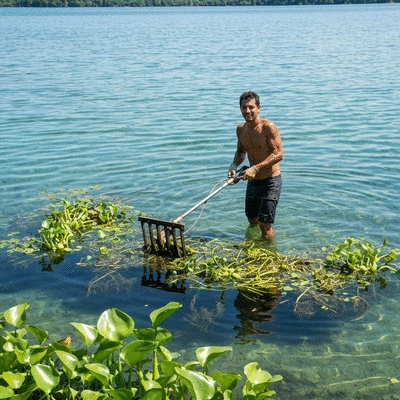
Importance of Ongoing Awareness and Management Strategies
Maintaining a vigilant approach to aquatic plant management is essential. The nature of invasive species—like hydrilla—demands that we stay informed and proactive in our efforts to keep their spread in check. The best strategies involve a combination of local knowledge, persistent observation, and community involvement.
- Regularly monitor local waterways for unusual plant growth.
- Participate in community clean-up days to physically remove invasive species.
- Stay updated on local management strategies and best practices.
By engaging in these practices, you can contribute to the ongoing fight against invasive aquatic plants. Remember, your role is crucial in preserving the integrity of our ecosystems. What steps will you take today to enhance awareness in your community?
Examining Control Methods for Invasive Aquatic Species
Combatting the rise of invasive aquatic species requires a multi-faceted approach. From mechanical removal to chemical treatments, here are some effective control methods worth considering:
- Mechanical Removal: Physically extracting the plants using tools like rakes or aquatic vacuums.
- Chemical Control: Applying herbicides specifically targeting invasive species, while being cautious of non-target plants.
- Biological Control: Introducing natural predators or competitors that can keep invasive populations in check.
Utilizing a combination of these methods can lead to more successful outcomes in managing hydrilla and its counterparts. It’s important to assess your local context, as what works in one area may not be effective in another. Have you had success with any of these methods? Sharing your experiences can inspire others to take similar actions!
Engaging with Ecological Conservation Efforts
Finding Local Resources for Aquatic Plant Management
To effectively manage invasive aquatic plants, it’s essential to tap into local resources and networks. The Hydrilla Conservation Initiative aims to connect you with vital resources that can enhance your understanding and management efforts.
- Local environmental organizations often host workshops and provide educational materials.
- State and federal agencies may offer permits and guidelines for managing invasive species.
- Online platforms, including our site, provide identification tools and best practice guides.
Utilizing these resources not only enhances your knowledge but also fosters community collaboration. What local resources have you found helpful in your conservation efforts?
Encouraging Community Involvement in Invasive Species Control
Community involvement is a cornerstone of effective invasive species management. By rallying your neighbors and local groups, you can create a collective impact. Here are some steps to encourage community participation:
- Organize local educational events focusing on aquatic plant identification.
- Form volunteer groups for clean-up and monitoring activities.
- Utilize social media to share information and successes.
Together, we can cultivate a sense of stewardship in our communities. How might you inspire others to join in this vital work?
Exploring Habitat Restoration Strategies for Aquatic Ecosystems
Restoring habitats affected by invasive species is a key step in ensuring the health of our aquatic ecosystems. Effective restoration strategies may involve:
- Removing invasive plants to restore native species.
- Reintroducing native aquatic plants that promote biodiversity.
- Monitoring water quality to ensure a healthy environment for all species.
By actively participating in habitat restoration, we can help revitalize our waterways, supporting a diverse array of wildlife. Think about how your actions can foster restoration efforts in your area! Every small step contributes to the larger goal of ecological balance.
Frequently Asked Questions (FAQs)
- Q: Why is accurate identification of aquatic plants important?
- A: Accurate identification is crucial for effective ecosystem management, allowing for targeted resource allocation, preservation of native species, and clear communication with community members regarding invasive species like hydrilla.
- Q: What are the main distinguishing features between Hydrilla, Elodea, and Egeria?
- A: Hydrilla has whorled leaves (5-7 per node) with serrated edges and grows aggressively. Elodea typically has softer, broader, rounded leaves and is a beneficial native. Egeria features wider, less serrated leaves and thrives in flowing waters, similar to elodea but with distinct flowering.
- Q: How does Hydrilla impact freshwater ecosystems?
- A: Hydrilla is an aggressive invasive species that forms dense mats, displaces native flora, and can negatively impact aquatic habitat and biodiversity.
- Q: What control methods are effective against invasive aquatic species?
- A: Effective control methods include mechanical removal (physically extracting plants), chemical control (applying targeted herbicides), and biological control (introducing natural predators or competitors). A combination of these methods often yields the best results.
- Q: How can communities get involved in aquatic plant management?
- A: Community involvement can be fostered through organizing educational events, forming volunteer groups for clean-up and monitoring, and using social media to share information and successes. Local environmental organizations and government agencies often provide resources and guidance for these efforts.
For more detailed scientific insights into aquatic plants and their management, you can refer to authoritative studies such as "Biological control of aquatic weeds: a critical review and future perspectives" available on PMC NCBI.
Recap of Key Points
Here is a quick recap of the important points discussed in the article:
- Accurate identification of aquatic plants like hydrilla, elodea, and egeria is crucial for effective ecosystem management.
- Understanding the ecological roles of these plants helps prevent mismanagement and preserves native species.
- Key identifying features include hydrilla's serrated whorled leaves, elodea's broader, softer leaves, and egeria's robust growth in flowing waters.
- Engaging the community and utilizing local resources can enhance awareness and action against invasive species.
- Implementing integrated management strategies, including mechanical, chemical, and biological controls, is essential for combating invasives like hydrilla.

